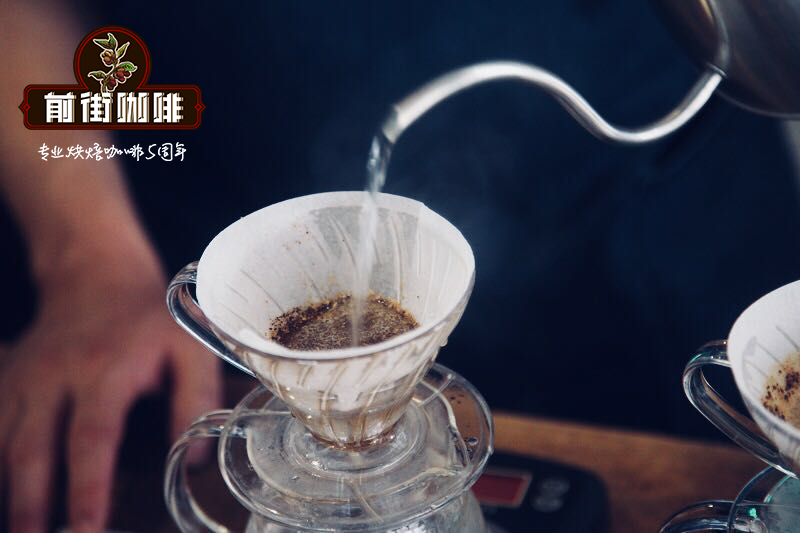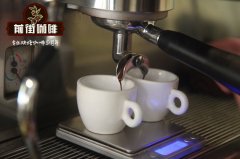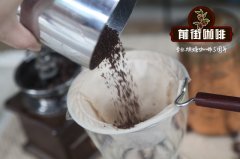How to set the brewing scheme of coffee with different roasting degrees? what is the relationship between brewing and roasting?

Making quality coffee means balancing many variables. In addition to considering the brewing method and the ratio of coffee to water, you should also keep in mind your baking style.
You may have the only way to make a high-quality V60, but if you change from light baking to medium baking, you may need to reconsider. Read on for some insights on how to adjust the roasting characteristics of coffee.
How does the general situation of coffee roasting change
Roasted coffee is usually divided into light, medium and dark colors, and you may want to bake it into a coffee suitable for home brewing. But what is the real difference between baked contours?
There is no industry standard for defining light, medium or dark colors, and ovens usually use their own names for different profiles. But overall, light roasting retains more coffee bean flavor, which highlights floral and citrus aromas. As the roasting color of the coffee gets darker, these subtle flavors will be overwhelmed by more chocolate and nutty flavors. If the coffee is roasted very dark, it may become bitter.
Flavor is not the only difference between baking degrees. As coffee is exposed to more calories during longer or hotter roasting, it becomes more porous and therefore more soluble. This is part of the reason why medium or dark roasted coffee is usually used to make espresso-because the extraction time is only very short, more soluble roasting works better than light roasting.
Why do you cook light and dark baking in different ways?
A good cup of coffee depends on the correct level of extraction. When roasted and ground coffee beans are introduced into the water, many compounds are extracted. First extract the compounds responsible for fruit taste and acidity. Then, extract the sugar to produce a sweet taste. The compounds that cause bitterness are then extracted. If the coffee is not extracted enough, it may become sour because the sugar has no chance to enter the brewing state. If you extract too much, it may be too bitter.
Because the pores of light baked products are less than those of dark baked products, the extraction speed of these compounds will be slower. This is why light roasting usually uses slow methods (such as pouring in)-beans take longer to come into contact with water than fast concentrates (such as espresso). This also means that if you use exactly the same formula and bake the same coffee to two different flavors, you will experience different tastes and tastes.
A small amount of roasted coffee will bring you more complex notes, which are best accentuated by pouring in slower brewing. Due to the extraction rate, darker roasting may not be emitted by slower brewing, which may lead to the extraction of more irritating or bitter coffee.
How to adjust the cooking parameters to obtain different baking curves
So, you've figured out the recipe, but you want to try new beans. How do you adjust your method to suit different baking methods? To compensate for the difference in porosity and solubility, you can change some variables.
Grinding degree
When the coffee is ground finer, its surface will be more exposed. This means that the extraction will proceed faster. Therefore, if you are used to cooking with medium baking and try to bake light, grind it a little bit. Similarly, if you usually use light-colored baked beans but want to turn black, use a thicker grinding powder.
Personally, I always grind my beans finer, if they are shallower baking and darker ones are rougher baking. This is because dark roasting tends to taste more bitter at the beginning, so the longer contact between water and coffee can lead to overextraction.
Water temperature
There is no suitable temperature for brewing coffee (although there is a recommended temperature range, such as the 195MW 205 °F / 90 MI 96 °C recommended by SCA). But the hotter the water used, the faster the extraction. Some compounds are never extracted at very low temperatures, which is why cold-brewed beer tends to be mellow and sweet, but lacks bitterness to balance other aromas.
Considering the water temperature is another factor that you can adjust to bring out the taste you like in your coffee. If you are using dark baking, you may need to lower the water temperature to avoid overextraction and reduce the chance of bitterness. If your barbecue is lighter than usual, using hot water can help speed up the extraction.
The general rule is that the temperature of dark baking is lower, while that of light baking is higher. An additional point is that if you cook it in high-temperature water to a dark baking degree, it may not taste good, while if you cook it at a lower temperature, it may taste good. "
Brewing time
The longer the coffee comes into contact with water, the more time it takes to extract. Keep this in mind when choosing brewing methods-as mentioned earlier, the extraction opportunities for espresso are very short, so light roasting may not be the best choice.
In each cooking method, you can also adjust the technology to provide longer or shorter cooking time. For example, it can only be served by slowly pouring water when making filtered coffee, or by letting the French press sit for longer.
For lighter roasted coffee, I have found that soaking it for longer before the first drip gives the coffee more time to give off a more complex and complex flavor. "
Pay attention to other factors
It may be interesting to use different baking curves with different grinding sizes, water temperatures and brewing times, and to see how these variables affect your cup. However, you should also consider which features may change unexpectedly.
With the aging of coffee beans, the flavor will decline. Oxidation and degassing deprive coffee of important oils and compounds that contribute to the body, aroma and flavor. It is generally recommended to use roasted coffee beans within two weeks of purchase, store them in sealed and airtight containers, and grind them as needed to avoid faster oxidation.
If you know that the beans are a little old, you can adjust the formula to compensate. By grinding finer and lighter baking, you will increase the surface area and extraction rate, making the raw beans slightly old.
Old dark baked beans may be very porous and therefore very soluble. Grinding a little or using cooler water will slow down the extraction and prevent it from becoming too bitter.
It is recommended to keep in mind some other factors that may affect your final outcome. What kind of water do you use, the freshness of beans, the quality of beans, the cleanliness of the equipment. "you have to be aware that every step of the process affects the outcome of the cup.
Maybe you have a recipe developed through controlled experiments or trial and error. However, when you try to use beans in a new baking curve or other roaster, it's time to reconsider your approach. By understanding how to adjust variables including grinding size, cooking time and water temperature, you can achieve excellent results under each baking curve.
Important Notice :
前街咖啡 FrontStreet Coffee has moved to new addredd:
FrontStreet Coffee Address: 315,Donghua East Road,GuangZhou
Tel:020 38364473
- Prev

How to maintain the Italian coffee machine how to understand the structure of the Italian coffee machine and how to repair the coffee machine
The coffee machine is a technological miracle. Since it was first launched in the late 1800s, these professionally produced electrical appliances have made great progress. The steam pressure system in the 19th century has evolved into pump drive and electrical technology. Baristas can now operate using apps on their smartphones without having to touch the machine itself. Why should we buy a refurbished espresso machine? Need
- Next

Does the concert affect the sense of taste when drinking coffee? how to sweeten a cup of coffee? what kind of coffee is sweet?
Many years ago, Charles Spense, a professor of experimental psychology at the University of Oxford in England, conducted a study. The content is that the sound that humans hear when eating affects the taste of food. For example, if the background music is different when drinking coffee, the perception of bitterness or sweetness will be different. Charles Spense calls this phenomenon Sound Seasoning, which means that someone is eating.
Related
- Beginners will see the "Coffee pull flower" guide!
- What is the difference between ice blog purified milk and ordinary milk coffee?
- Why is the Philippines the largest producer of crops in Liberia?
- For coffee extraction, should the fine powder be retained?
- How does extracted espresso fill pressed powder? How much strength does it take to press the powder?
- How to make jasmine cold extract coffee? Is the jasmine + latte good?
- Will this little toy really make the coffee taste better? How does Lily Drip affect coffee extraction?
- Will the action of slapping the filter cup also affect coffee extraction?
- What's the difference between powder-to-water ratio and powder-to-liquid ratio?
- What is the Ethiopian local species? What does it have to do with Heirloom native species?

